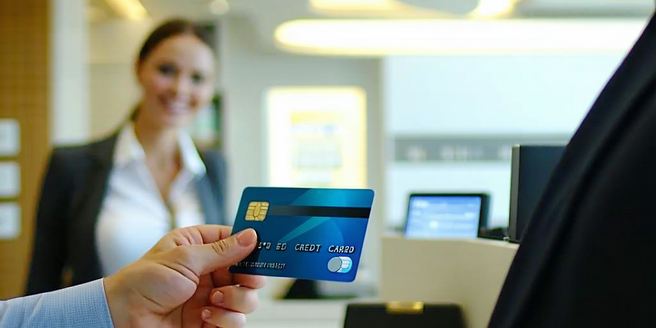Understanding Secured Credit Cards
| Feature | Description | Example |
| Security Deposit | A deposit required to open the account, usually equals the credit limit. | $200 deposit for $200 credit limit. |
| Credit Building | Helps build or rebuild credit history with responsible use. | Improving credit score over time. |
| Interest Rates | Interest may apply on carried balances. | Varies by issuer, often higher. |
| Fees | Annual fees and other charges may apply. | $29 annual fee. |
| Conversion | Option to convert to unsecured card. | After a review of credit performance. |
| Accessibility | Available to individuals with limited or poor credit. | First-time borrowers. |
How Secured Credit Cards Work
Secured credit cards require a cash security deposit that serves as collateral for the credit limit. This deposit minimizes risk for lenders and acts as a safety net. Users make monthly payments like any credit card, and responsible usage can lead to credit score improvements. Over time, users can develop better financial habits through regular transactions. Prompt payments ensure the deposit isn’t tapped for missed bills, acknowledging the terms set by issuers. Most card issuers will report transactions to credit bureaus, enabling users to build a credit history. Eventually, holders may upgrade to unsecured cards, entailing a review of their credit performance and possibly returning the initial deposit, marking a significant milestone in personal finance management.
Benefits of Secured Credit Cards
Secured credit cards provide a practical route for establishing or repairing credit scores, ideal for first-time borrowers or those encountered with financial challenges. They function conveniently like regular credit cards, offering the flexibility of making purchases and timely payments. Regular use of these cards can significantly aid in boosting one’s credit score. This is especially beneficial in demonstrating creditworthiness to future lenders. Additionally, many secured credit cards offer online tools to track spending and set budgeting goals. Furthermore, such cards lower the risk of accumulating unmanageable debt, thanks to their deposit-backed nature. Various issuers also incorporate programs that incentivize positive financial behavior, such as no-fee upgrades to unsecured credit cards. These make secured cards a judicious step forward in achieving a robust financial standing.
Introduction to Unsecured Credit Cards
Unsecured credit cards are the standard in the credit card world, not requiring any collateral or deposit for approval. They allow consumers to borrow funds within a defined credit limit, which is determined by an issuer’s assessment of creditworthiness. It’s important to note that these limits can vary significantly from one issuer to another. There are various types and benefits associated with unsecured cards, often offering rewards, cashback, or travel perks. Applicants should be aware that these cards depend heavily on credit scores, with higher scores generally leading to better terms and lower interest rates. Unsecured cards are an essential tool for many, facilitating convenient transactions and purchase protection, all the while building further credit credibility for responsible users.
How Unsecured Credit Cards Operate
Unsecured credit cards operate without the need for a security deposit. Once a consumer is approved, the card issuer provides a credit limit based on the individual’s creditworthiness, income, and financial behavior. Cardholders are expected to make at least minimum payments on their outstanding balances each month. It’s important for consumers to understand the terms and conditions associated with their credit cards to avoid unexpected fees. Failure to meet these obligations can result in penalties, higher interest charges, and a negative impact on credit scores. Many issuers offer various promotional terms, such as introductory interest rates or reward points for certain transactions. Unsecured cards facilitate credit history development, provided users employ prudent financial management practices.
Advantages of Unsecured Credit Cards
Unsecured credit cards provide remarkable advantages when used responsibly. Unlike secured cards, they do not require upfront deposits, freeing up personal resources for other financial needs. They typically offer competitive interest rates to credit-worthy individuals, leading to lower borrowing costs. Additionally, many unsecured cards come with a range of rewards programs including cash back, travel points, or merchandise discounts, which can be very enticing for frequent users. For instance, accumulating travel points can lead to significant savings on holiday trips. These rewards can add significant value to everyday purchases. Moreover, the potential to build credit scores is significant, helping consumers qualify for better credit terms in the future. However, these benefits hinge on responsible usage and maintaining good payment records.
Comparing Fees and Interest Rates
Fees and interest rates are critical factors when choosing between secured and unsecured credit cards. Secured credit cards may incur setup or ongoing fees, which can vary significantly between issuers. Interest rates for secured cards can also be higher, as they cater to individuals with limited credit history. Additionally, some secured card issuers may require a refundable security deposit as collateral. On the other hand, unsecured credit cards often offer more competitive rates, especially to those with a strong credit profile. Promotional interest rates can lead to substantial savings if utilized wisely. It’s vital for users to understand the total cost of ownership for both card types, considering factors such as annual fees, interest charges, and potential penalty fees for late payments.
Credit Score Implications
Both secured and unsecured credit cards play pivotal roles in influencing credit scores. Secured cards are particularly beneficial for those aiming to establish or rebuild credit, as they typically report to all major credit bureaus. With consistent, responsible usage, individuals can see notable improvements in their scores. It’s important to compare the features and fees of different credit card options to find the most suitable one for your needs. Unsecured cards, while also contributing to credit history, require users to maintain good standing to reap the full benefits. Late payments or excessive borrowing can lead to credit score setbacks, impacting future credit opportunities. Therefore, understanding these implications is crucial for making informed decisions about which type of card best suits one’s financial goals and current situation.
Choosing the Right Card for You
When deciding between secured and unsecured credit cards, individuals need to assess their financial circumstances and objectives. If rebuilding or establishing credit is a priority with limited risk, a secured card could be ideal. It’s essential to understand the terms and conditions of each card type thoroughly. For those with proven creditworthiness, an unsecured card can offer more attractive rates and rewards. Consider factors such as available credit limits, annual fees, interest rates, and the impact on credit scores. Trusted issuer reputation and customer service are also important. Ultimately, the right card should align with one’s financial strategy, provide the best value, and lead towards achieving long-term financial goals and support responsible spending habits.
Tips for Responsible Credit Card Use
Responsible credit card use is essential for maintaining financial health and improving credit scores. Always make at least the minimum payment by the due date to avoid penalties and negative marks. It’s advisable to pay off the balance in full monthly to steer clear of high-interest charges. Establishing a consistent payment schedule can also help maintain discipline in managing your finances. Keep credit utilization low, ideally below 30% of the available credit limit, as this favorably impacts credit scores. Regularly monitor statements for accuracy and unauthorized activity, utilizing alerts or personal budgeting tools. Finally, assess financial commitments periodically, ensuring that you’re optimizing benefits, such as rewards or cash back, that align with your spending habits and personal financial plan.



